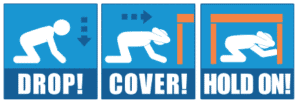Workplace violence is a haunting fear for employees and employers alike. It’s not a casual concern either. The BLS reports that nearly 19000 people were traumatized or killed by workplace violence in 2017 alone. If you want to provide your employees with a safe work environment, here are nine questions you should ask yourself.
Do You Maintain a Workplace Violence Policy?
While violence against another person is illegal in general, most workplaces set out a formal policy as well. These policies generally take the form of automatic dismissal for any act of violence. The threat of losing one’s job may just stay someone’s hand if they’re made aware early on.
Do You Offer Employee Assistance Programs or Could You?
Workplace violence often stems from pressures outside of the job, either financial or emotional. Do you offer financial assistance programs? Counseling? If not, consider staring such programs.
Do You Encourage Emotional/Mental Health Activities?
Many workplaces encourage emotional/mental health activities by sponsoring them. A simple example is offering flexible scheduling. This lets people better manage their home life.
Do Managers Have the Right Training to Spot Warning Behavior?
Managers are often best placed to spot an employee in trouble. They still need the proper training to identify troubled employees before things escalate.
Do You Maintain a Process for Ending Employment?
A formal process for ending someone’s employment sets out procedures that help control that person’s exit. The process can prevent physical altercations by, for example, having security present.
Do You Maintain a Formal Process for Reporting Threats?
If you don’t have a formal process for reporting threats, consider setting one up. This can allow more timid employees to make reports without having to confess to a trauma publicly.
Do You Maintain Basic Security at Entry Points?
Security at entry points for your business can make the difference between an ex-employee or disgruntled spouse getting inside or not. Keycards or barcoded badges are a simple solution.
Can You Use Technology to Limit Potential Violence?
Security companies and computer scientists have developed programs that can assess historical data and offer predictions of future behaviors. Do you employ technology like this to analyze complaints and reprimands for your employees? If you employ a large number of employees, it may prove invaluable in protecting everyone.
Do You Provide Ongoing Training for Emergency Situations?
The average person isn’t prepared for an emergency situation. They need the training to make smart choices. If you aren’t offering emergency training, such as active shooter training, it’s time to make that happen.
You Can Do a Lot to Prevent Workplace Violence
Employers can take a lot of steps to minimize workplace violence. You can offer assistance programs, training, and encourage emotional wellness. You can also create processes for termination, threat reporting, and install security at entry points. As with most safety issues, preparation can dramatically improve your outcomes.
